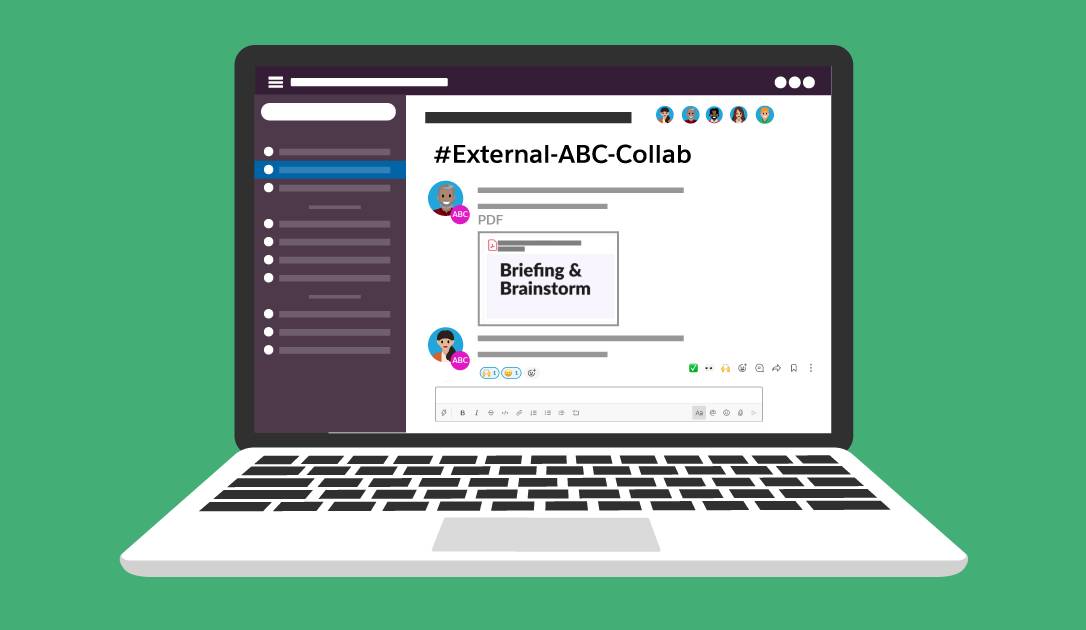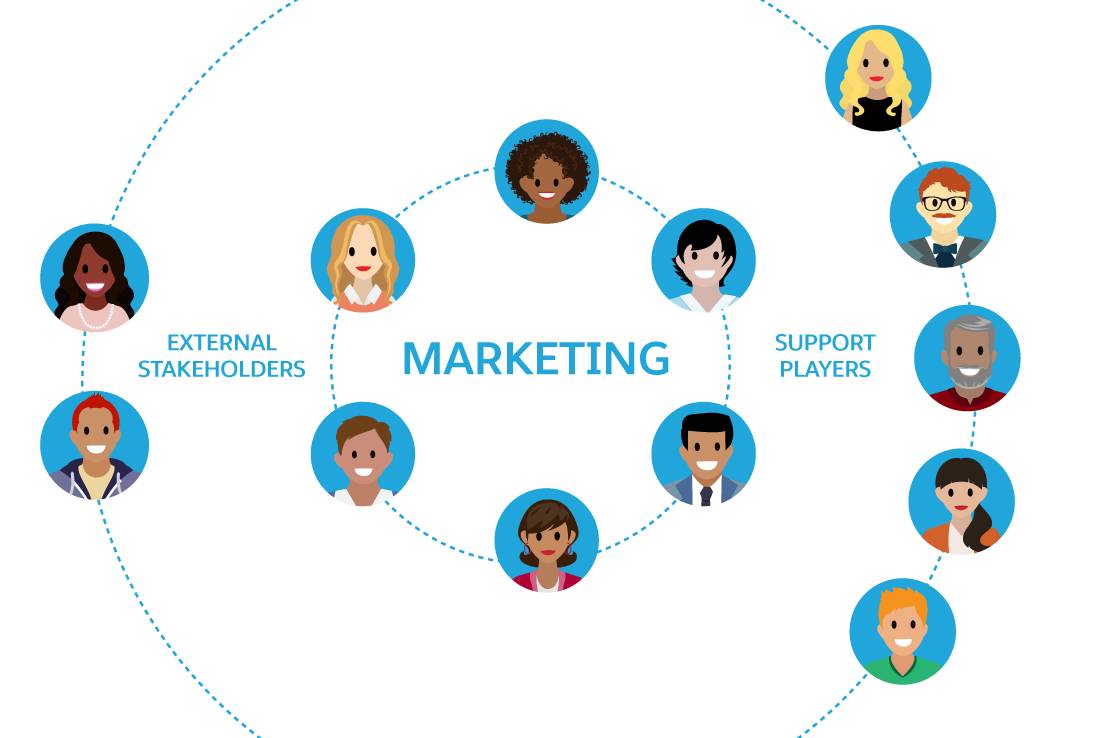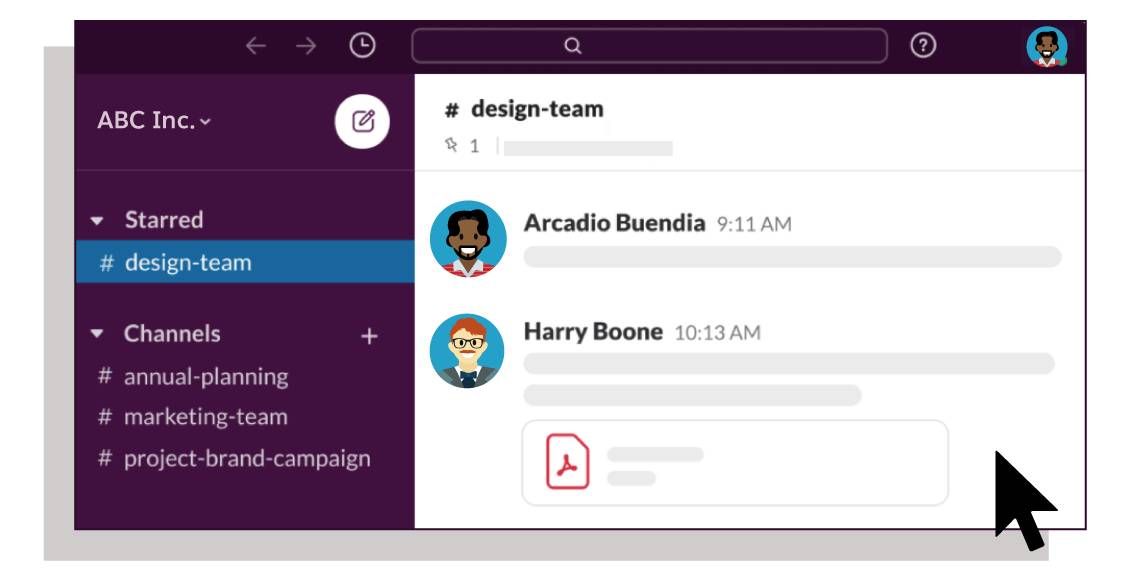Discover Slack for Marketing
Learning Objectives
After completing this unit, you’ll be able to:
- Explain how Slack supports your marketing teams and processes.
- Describe how Slack helps maximize team effectiveness.
- Explain how Slack helps marketing teams run campaigns more efficiently.
Slack Is Where the Future Works
Slack is your company’s virtual headquarters. It connects everyone in your business and supports the way people naturally work together—in real time or not, in person and remote, structured and informal.
It’s where conversations come together, information can easily be found, collaboration is seamless, and your team’s favorite apps are connected in one place. Slack encourages knowledge-sharing across the organization and gives everyone direct and instant involvement with ideas—and the people who have them.
Slack helps you across three main pillars.
- People: Slack is the simplest way for teams to move fast, stay aligned, and feel connected.
- Partners: Access the world’s largest and most secure network for business collaboration.
- Systems: Centralize business processes to deliver the shortest path from data to action.
In short, Slack is where the future works.
Introducing Slack-First Marketing
To create campaigns and journeys that deliver the right message to customers at the right time, marketers need a blend of soft skills and technical skills.
Here are a few of the most important soft skills that marketers need.
- Telling effective stories
- Developing a content strategy
- Managing content and content operations
- Developing customer journeys
- Understanding the industry
Marketers also need a number of technical skills.
- Managing and analyzing data
- Segmenting the audience for optimized message delivery
- Using artificial intelligence and automation to make data-driven decisions
You and your marketing team deploy all these skills every day. You’re brainstorming campaign ideas and tracking the development and approval of creative assets. You’re analyzing performance data. And you’re also adapting to a changed world, by finding new ways to generate demand and get to know your customer segments. For successful marketers these days, it’s less about identifying leads through in-person events and more about creating innovative hybrid and online experiences that meet ever-higher customer expectations. And it’s about removing friction from your processes and making every minute count.
In this new landscape, Slack can help your team work even more effectively. When everyone collaborates in Slack, they’re using a tool that is:
- Optimized for streamlined interactions with members of the marketing team, supporting departments, vendors, and partners
- Integrated with marketing and CRM software, so that everyone has visibility into campaign and account information
- Automated to reduce routine tasks and streamline marketing workflows
With more departments than ever involved in developing marketing strategy, tactics, and deliverables, it’s critical that teams stay in sync on progress, roles and responsibilities, and goals and outcomes. This is true for both business-to-consumer (B2C) and business-to-business (B2B) marketing teams. Whether your company sells a product or a service, and whether you sell it to individual consumers or other businesses, Slack provides visibility to all stakeholders, so everyone can see projects through from start to finish. This is what it means to think Slack-first for marketing.
Manage More—and More Effective—Marketing Campaigns Using Slack
One way Slack helps remove friction from your processes is by connecting the marketing team to other key players, from supporting departments to external agencies, vendors, and partners. With Slack, you can create designated, organized channels where marketing team members can quickly discover important information and connect with the right people. And you can automate marketing workflows, and integrate third-party tools and apps to support the marketing use case.
Because public Slack channels are fully searchable, they automatically function as a hub of knowledge that everyone in your organization can access. That means that when someone needs a key data point or status update, they can find that information fast, then take action to move projects forward.

And thanks to Slack Connect (available as part of every paid Slack plan), you can work directly with collaborators outside your organization, such as PR firms, advertising agencies, and vendors. Share content, give feedback, and manage approvals right in Slack. Everyone works faster, with less time spent writing emails, scheduling calls, and hunting for assets—and more time spent delighting customers.
With Slack, supporting players can come in and out of marketing channels as necessary, so they can contribute at just the right time. For example, a workflow might alert your sales team when you add your customer to a journey, so sales reps can make sure their own communications align with the latest messaging.

Your marketing team works together in Slack, with supporting teams and external stakeholders coming in and out of conversations as needed.
Your team—writers, designers, developers, managers, admins, and event specialists—can use dedicated Slack channels to exchange in-context info and collaborate on campaigns and other projects. Supporting players from Sales, Branding, Finance, Product, and Legal can work directly with you in Slack to provide information and approvals needed to support marketing efforts. And you can invite external stakeholders, such as agencies and partners, to work with you in shared channels via Slack Connect.
The Future of Marketing Is Slack-First
Let’s take a look at how marketing teams can thrive in a Slack-first environment.
| Traditional Marketing |
Slack-First Marketing |
|---|---|
|
Send a series of emails to teammates trying to track down who has the latest logo files and other brand assets. |
Post your question to the mktg-brand-central channel and get a quick answer. |
|
Host a weekly meeting to review creative requests and assign to team members. |
Create a mktg-creative channel; use a workflow to post request details to the channel, so team members can pick up projects as they have bandwidth. |
|
Host daily meetings to drive collaboration among teams leading up to the new product launch; create a temporary microsite to store documents and project plans. |
Create a #mktg-product-launch channel where everyone stays aligned on key dates, shares relevant files, and provides the latest messaging and positioning updates. |
|
Use a third-party tool to manage campaigns, export data to analyze results, and share manually with the team. |
Integrate the third-party tool with Slack to track performance stats, directly manage campaigns, and stay on top of social media mentions, all from within Slack. |
|
Use email and static file attachments to collaborate with external agencies on marketing projects. |
Invite external agency team members to Slack channels and collaborate directly in the channel with files and messages. |

Now you know what Slack-first marketing is, and how Slack can help your team manage campaigns more efficiently. In the next unit, we take a look at four things you need to think about when getting started with Slack.